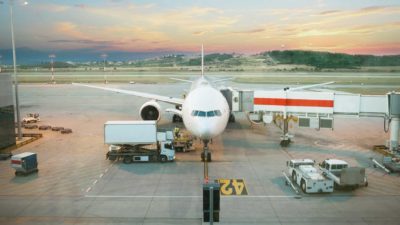The Qantas Airways Limited (ASX: QAN) share price will be one to watch on Thursday.
That's because the airline operator has just released its half-year results for FY 2023.
Qantas share price on watch after beating guidance
- Revenue up 222% over the prior corresponding period to $9.9 billion
- Underlying profit before tax of $1.43 billion compared to loss of $1.3 billion
- Statutory profit after tax of $1 billion
- Net debt reduced to $2.4 billion
- $500 million on-market share buy-back announced
What happened during the six months?
For the six months ended 31 December, the Flying Kangaroo reported a 222% increase in revenue to $9.9 billion. This reflects a 450% increase in net passenger revenue and a 14% increase in other revenue, which offset a 12% decline in net freight revenue.
The former was driven by the return of domestic and international operations, as well as revenue growth at Qantas Loyalty, whereas the latter was the result of a moderation in record yields as international belly space capacity returned.
And while Qantas carried approximately 20% fewer passengers than pre-COVID levels, it was generating significantly more revenue per available seat kilometre.
This ultimately underpinned an underlying profit before tax of $1.43 billion for the first half of FY 2023. This was at the high-end of its upgraded guidance range and represents a $2.73 billion improvement on the loss of $1.3 billion recorded a year earlier.
And although no dividend has been declared, Qantas will be returning funds to shareholders. It has announced an on-market share buy-back of up to $500 million. This is due to commence in March and follows a $400 million buy-back that completed in December.
Management commentary
Qantas CEO, Alan Joyce, was rightfully pleased with the company's performance during the half. He said:
This is a huge turnaround considering the massive losses we were facing just 12 months ago. When we restructured the business at the start of COVID, it was to make sure we could bounce back quickly when travel returned. That's effectively what's happened, but it's the strength of the demand that has driven such a strong result.
The good news for travellers is that airfares could be coming down in the near future as headwinds ease and capacity increases. Joyce added:
Fares have risen because of higher fuel costs, but also because supply chain and resourcing issues meant capacity hasn't kept up with demand. Now those challenges are starting to unwind, we can add more capacity and that will put downward pressure on fares. In terms of overheads, we expect the costs we're carrying from the extra operational buffer will start unwinding from this half and into next financial year.
Outlook
Although no guidance has been provided, management appears positive on the company's outlook in the second half and in FY 2024. It notes that "travel demand expected to remain strong throughout FY23 and into FY24."
In light of this, Group Domestic capacity is set to increase from 94% to 103% through the second half of FY 2023, whereas Group International capacity is to increase from 60% to 81%.
Fares are expected to moderate during the second half as capacity increases but will remain significantly above FY 2019 levels. Qantas also revealed that it expects its fuel cost for FY 2023 to be $4.8 billion, with hedging in place.
The Qantas share price is up 21% over the last 12 months, as you can see below.








